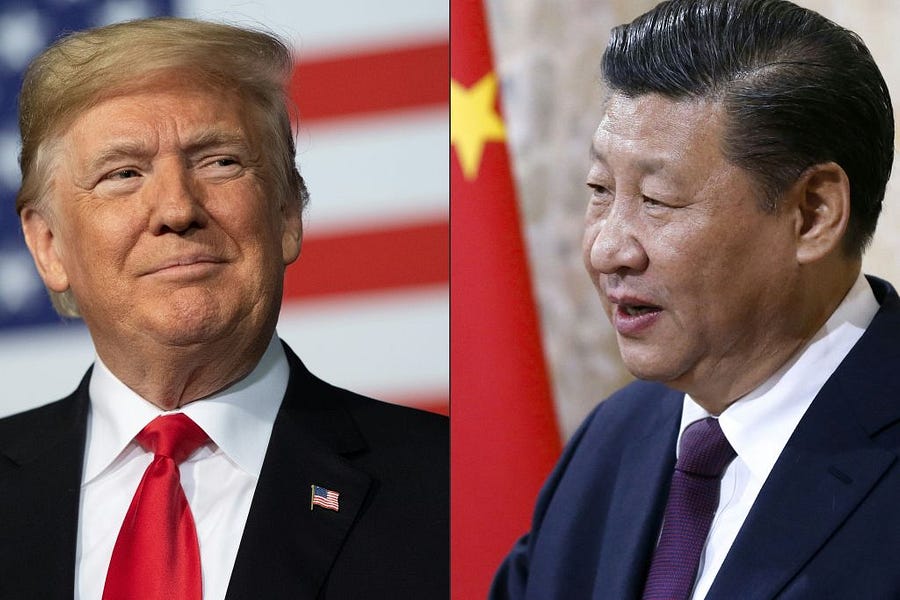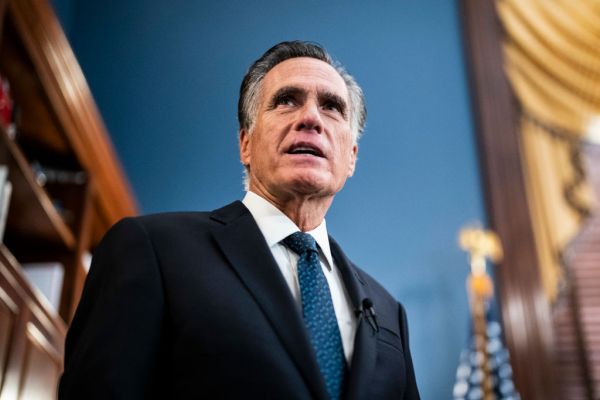In late May, even as the turmoil grew here at home, the White House released a 16-page strategy paper outlining the threat posed by what the Trump administration sees as America’s strongest foe: the Chinese Communist Party. As I discussed in the inaugural Vital Interests newsletter earlier this year, “great power competition” (GPC) is all the rage these days in Washington, D.C. The concept has much merit, but it can also be used to overshadow other complex and evolving threats that require careful responses, such as terrorism.
In any event, readers of the White House paper have to wait until Page 8 to see the concept introduced. The key sentence reads: “Given the strategic choices China’s leadership is making, the United States now acknowledges and accepts the relationship with the PRC [People’s Republic of China] as the CCP [Chinese Communist Party] has always framed it internally: one of great power competition.”
That is a subtle, yet important way to reframe America’s relations with China. The implication is that the CCP initiated the rivalry—not the U.S.A. While there is much to critique about American foreign policy over the past four decades, that is generally true.
White House rejects a deterministic view of democracy promotion.
If anything, the predominant thinking in American policymaking circles held that China would moderate its behavior and become more politically liberal as a result of its integration into the so-called international order. The White House rejects that thesis in the opening lines of its strategy document.
U.S. “policy toward the PRC was largely premised on a hope that deepening engagement would spur fundamental economic and political opening in the PRC and lead to its emergence as a constructive and responsible global stakeholder, with a more open society.” But that premise “underestimated the will of the” CCP to “constrain the scope of economic and political reform in China.”
Indeed, it did. Relative economic liberalization and engagement may be necessary for political liberalization, but they clearly were not sufficient. Just look at recent events in Hong Kong, the CCP’s oppression of Muslims in Xinjiang and its suppression of political dissidents, among other authoritarian moves. Democracy is not blooming in Beijing despite more than four decades of increasing economic ties. This isn’t to say that the American-led engagement with China has had zero benefits. It simply hasn’t been politically transformative.
Instead, as the authors of White House paper remind us, Xi Jinping has predicted that “capitalism is bound to die out and socialism is bound to win.” This is the CCP’s peculiar brand of “socialism with Chinese characteristics,” which mixes a degree of competition with strict totalitarian oversight. Xi and his comrades have prepared for what he calls a “long-term period of cooperation and conflict” with the U.S. and its allies.
The U.S. government is attempting to calibrate its response within those bounds—determining where cooperation is warranted and conflict may be unavoidable. It’s an extremely difficult balancing act and no one has a magic scale for getting it right.
A sly renunciation of regime change?
There are a few passages in the document that require careful reading, because there is more to them than it initially appears. Here’s one such sentence, sandwiched into a paragraph on the first page: “Our approach is not premised on determining a particular end state for China.” That’s a subtle rebuke of the idea that America must work to change the regime in Beijing in order to ensure security.
Later in the document we read this: “Whether the PRC eventually converges with the principles of the free and open order can only be determined by the Chinese people themselves. We recognize that Beijing, not Washington, has agency over and responsibility for the PRC government’s actions.”
That wording is no accident. It almost certainly means that the U.S. currently doesn’t seek to replace the CCP’s authoritarian regime with a democratic one. The U.S. is not planning on regime change via military invasion, which would be catastrophic. But the Trump administration isn’t pursuing other possibilities (such as economic sanctions aimed at reforming the political system) either. The administration will instead seek “to improve the resiliency of our institutions, alliances, and partnerships to prevail against the challenges the PRC presents,” while attempting “to compel Beijing to cease or reduce actions harmful to the United States’ vital, national interests and those of our allies and partners.”
None of this means that the U.S. has eschewed all democratic ambitions. As the paper makes clear, America supports a relatively free Hong Kong, which was supposed to enjoy a “high degree of autonomy” after the British turned the region over to the PRC in 1997. The CCP has regularly interfered in Hong Kong’s political affairs ever since, culminating in a recent national security law that may signal the end of the region’s autonomy. As Hong Kongers have made clear, they have a deep desire for democracy and independence. The same is true, of course, in Taiwan. The White House strategy paper reminds us that President Ronald Reagan insisted “that the quantity and quality of the arms provided Taiwan be conditioned entirely on the threat posed by the PRC.” The U.S. endorsed the sale of $10 billion worth of arms to Taiwan in 2019 alone. Although the U.S. government has long held a “One China” policy, it is quite obviously buttressing Taiwan’s capacity for self-defense against the CCP.
The U.S. cannot and has not entirely abandoned its advocacy of democratic principles in the name of some illusory balance of power. However, the Trump administration hasn’t embraced some wide-eyed belief that China can be easily transformed into a peaceful democratic state either.
Which leads to the fundamental, unanswered question: How far is the U.S. willing to go in support of democratic forces, whether they be in Taiwan, Hong Kong, or potentially elsewhere in the CCP’s sphere? That’s a question the CCP may force the U.S. to answer, sooner rather than later.
“Great Power Competition” isn’t just about military strength.
As the White House strategy paper makes clear, the U.S. government’s vision of “great power competition” doesn’t hinge on a military rivalry alone. While the Department of Defense plays a role, military strength is only one part of the vision set forth in the document.
At home, the Trump administration is attempting to persuade a broad array of parties that it is in their interest to roll back the CCP’s nefarious schemes, from stealing intellectual property, to spreading disinformation, to cybercrime. These efforts are led by the Department of Justice (DOJ), FBI and counterintelligence officials. “Vital partners of this Administration include the Congress, state and local governments, the private sector, civil society, and academia,” the strategy paper reads. Abroad, the U.S. “will work with our robust network of allies and like-minded partners to resist attacks on our shared norms and values, within our own governance institutions, around the world, and in international organizations.” This effort is led by the State Department.
Both the domestic and foreign components of the strategy therefore hinge on American legitimacy and ability to persuade others that its cause is just. That is a particularly daunting challenge in more stable times. It is only more difficult now, with the administration embroiled in domestic turmoil. Moreover, President Trump has shown little desire to reform international institutions or play the long game in foreign relations.
Meanwhile, the CCP is building its own rival global system. The White House strategy paper explains that the CCP’s One Belt One Road (OBOR) is an “umbrella term” used “to describe a variety of initiatives, many of which appear designed to reshape international norms, standards, and networks to advance Beijing’s global interests and vision, while also serving China’s domestic economic requirements.” The OBOR has suffered setbacks, but it’s part of an expansive vision, in which the CCP seeks to use its coercive economic power to expand its influence as well as its military’s footprint throughout the world.
Xi Jinping wants to make China a “global leader in terms of comprehensive national power and international influence.” That was true before the coronavirus pandemic, and it is still true now.
The White House has set forth its basic strategy for countering the CCP’s agenda, but no plan can account for all of the challenges ahead.
Photographs by Jim Watson, Peter Klauzner/AFP/Getty Images.






Please note that we at The Dispatch hold ourselves, our work, and our commenters to a higher standard than other places on the internet. We welcome comments that foster genuine debate or discussion—including comments critical of us or our work—but responses that include ad hominem attacks on fellow Dispatch members or are intended to stoke fear and anger may be moderated.
You are currently using a limited time guest pass and do not have access to commenting. Consider subscribing to join the conversation.
With your membership, you only have the ability to comment on The Morning Dispatch articles. Consider upgrading to join the conversation everywhere.